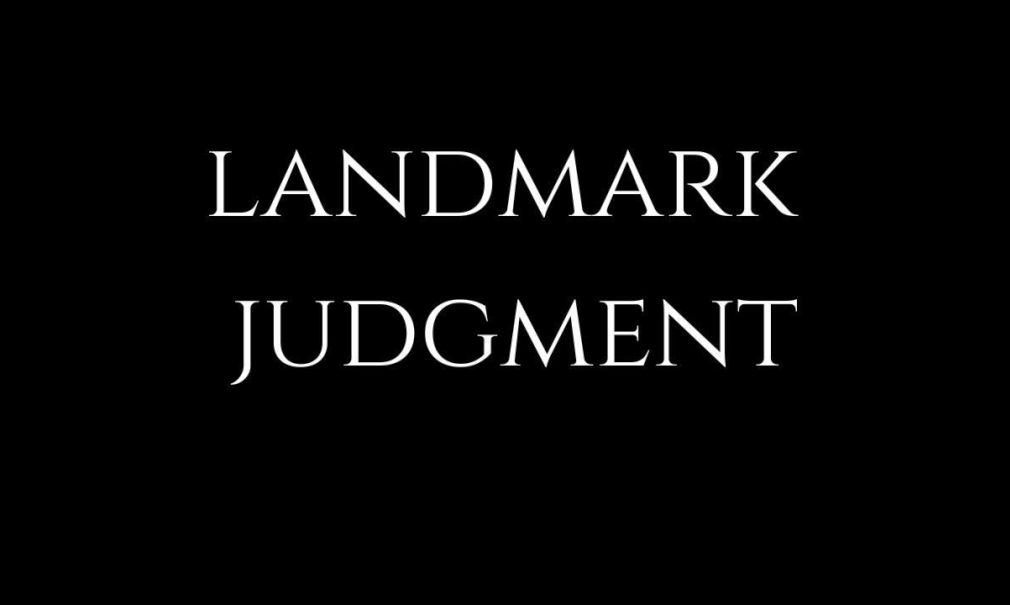Court: Bombay High Court.
Citation: (1934) 36 BOMLR 262.
Date of Judgement: 07/12/1933.
Appellant: Divan Ramsaran Singh.
Respondent: Thakur Mahabir Sewak Singh.
Bench:
- Justice Alness.
- Justice L. Sanderson.
- Justice Thankerton.
Cases Referred:
- Maharaja of Kolhapur v. Sundaram Ayyar, (1924) I.LR. 46 Mad.
Facts:
- The Appellant was the son of Dheeraj Singh and Musammat Ful Kaur. Dheeraj Singh had passed away on 16th February 1910.
- Dheeraj Singh has three wives, but he had no children with any of them. Brahmins advised him to marry a fourth wife by the katar form of marriage. Ful Kaur, the selected girl, lived with her grandfather in Bajiyabhawan in Mouza Bagdara. Dheeraj Singh sent a palki with a katar (dagger) inside it to bring Ful Kaur to Lafa. Deo Singh accompanied the palki.
- The Respondent, Mahabir Sewak Singh, was the son of Deo Singh. Deo Singh was the brother of Dheeraj Singh.
- The Appellant felt that he was entitled to inherit the Lafa Zemindari estate as the son of the late Zemindar Diwan Dheeraj Singh.
- On 23rd December 1927, the District Judge ruled in favour of the Appellant. However, that judgement was reversed on 16th December 1929 by the Court of Judicial Commissioner on appeal by the first Respondent.
- The Lordships in the Court of Judicial Commissioner had concluded that it was not satisfactorily proved that Dheeraj Singh was married to Ful Kaur by the ordinary ceremonies of a Hindu Marriage.
- The Appellant appealed to the Bombay High Court against the decision by the Court of Judicial Commissioner.
- Respondents Nos. 2 and 3, Ganesh Kaur and Dulaurin Kaur, supported the Appellant’s case. They were pro forma respondents only.
- The Lafa Zemindari was subject to the rule of primogeniture.
- There were a total of seven zemindaris in the Bilaspur District. The zemindars of all seven zemindaris recorded themselves as Kanwars at the time of settlement in about 1876.
- However, after that, over the years, they started calling themselves Tanwars. They even started claiming that they were Kshatriyas.
- Just before his death, Dheraj Singh had written a letter to the Deputy Commissioner of Bilaspur which stated the following:
I have made a report about my illness on 15th February 1910. Now I have no hope that I shall survive. So I make the following disposition of my Lafa Zamindari. The same be sanctioned.
(1) After me, my real nephew, Babu Mahabir Sewak Singh, the minor son of my brother Thakur Deosingh, be held owner of this zamindari belonging to me. As he is minor, mutation of this Zamindari be made in the name of Amrit Kuwar first, and after her in that of Musst. Ganesh Kuwar, and after her in that of Dularin Kuwar. Musst. Fulakuwar is my wife by katar marriage. She has a son by name Babu Ramsharan Singh aged about 10 years. They and their family should be maintained from the zamindari. Thakur Deosingh shall manage this zamindari now also as he did before and be appointed sarbarahkar.
Issue:
- Was the marriage between Dheeraj Singh and Musammat Ful Kaur valid?
The contention by the Appellant:
- Dheeraj Singh and Ful Kaur had a usual Hindu Marriage.
- A katar (dagger) was used in an ordinary marriage to denote the inferior caste of the wife. It was only a prelude to the ordinary marriage ceremonies.
- Dheraj Singh was not of sound mind when he had written the letter to the Deputy Commissioner.
The contention by the Respondent:
- Kanwars and Tanwars cannot legally intermarry.
- Ful Kaur was invariably referred to as a Katar Wife or Katyar Wife, and her marriage to Dheeraj Singh was described as Katar Marriage or Katyar Marriage.
- A katar marriage is not the same as a usual Hindu marriage.
Obiter Dicta:
- The expression ‘katar’ referred to a type of marriage different from a usual Hindu marriage.
- The Bombay High Court agreed with the findings of the Court of the Judicial Commissioner that there was not enough evidence to support the Appellant’s claim that Dheraj Singh was of unsound mind while writing the letter.
- Ful Kaur was referred to as ‘Katar Wife’ by the three other wives of the deceased Dheeraj Singh.
- There wasn’t enough evidence to prove that the marriage between Dheeraj Singh and Ful Kaur was a normal Hindu Marriage.
- Based on the statements given by the three previous wives of Dheeraj Singh, the letter written by Dheeraj Singh himself, it was evident that Ful Kaur was the Kaatar wife of Dheeraj Singh, and her marriage to Dheeraj Singh was a Katar Marriage.
Judgement:
- The marriage between Ful Kaur and Dheeraj Singh was held to be a Katar Marriage.
- The appeal was dismissed.
Rationale:
- Dheeraj Singh and Ful Kaur were married in a Katar (dagger) marriage ceremony.
- Dheeraj Singh distinguished Ful Kaur from his other three wives, being his wife by katar marriage. She was denoted as the Katar wife of Dheeraj Singh.
- A Katar marriage is not the same as a conventional Hindu Marriage.
Conclusion:
- While the Bombay High Court held that the marriage between Ful Kaur and Dheeraj Singh was valid, it was held to be a Katar Marriage. A Katar Marriage is one where the bride is given to the bridegroom’s katar (dagger). Such a marriage is different from a normal Hindu marriage. Therefore, the customary heredity laws and practices that applied to a normal Hindu marriage do not apply to a Katar marriage.
Prepared by Mihir Poojary.

